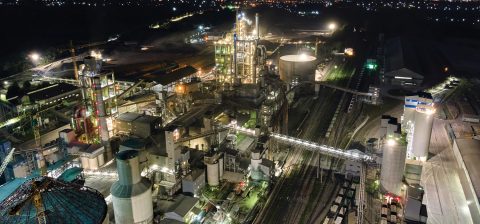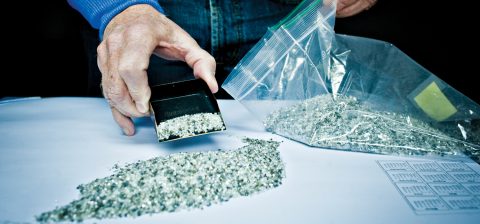Empowerment Government & Politics
Urban Regeneration Equals Inclusive Growth
The term radical economic transformation (RET) has undoubtedly created a major stir in South Africa. While the younger generation has been using it to push a new agenda to take over the rainbow nation rhetoric, international investors and big business have been so spooked by it that our previous Finance Minister Malusi Gigaba replaced it with ‘inclusive growth’. Still, there’s no denying that RET has taken on a life of its own. From land reparations to creating an inclusive economy through black entrepreneurship, RET has been bandied about as the next big saviour of our economy.
According to Barba Gaoganediwe, General Manager for Marketing and Communication at the Gauteng Tourism Authority, we are already well on our way there.
Youth entrepreneurship and the
township economy
The development of the Gauteng Infrastructure Tourism Development Masterplan has already seen implementation which has yielded tangible outputs in growing youth entrepreneurship and the township economy.
“Urban regeneration is an off-shoot of our plan for economic development and job creation. We found that if we develop the required infrastructure for tourism, it should not be designed only for international tourists but for the local community as well. For example, when a country includes a transport network, there’s road infrastructure, air travel, co-ordination services, language services, hygiene in parks and mobility, amongst a myriad of other factors – all working together to create a community which allows tourism to flourish,” says Gaoganediwe.
Local opportunities for entrepreneurs
After the governing African National Congress (ANC) lost key metros to the Democratic Alliance (DA) in Gauteng, the economic hub of the country and of the African continent, the DA has been at pains to prove they are a new broom sweeping clean – starting with Johannesburg mayor, Herman Mashaba.
Mashaba has gone on record to criticise the city’s bicycle lane formation in impoverished places like Alexandra township; as well as the re-imagined inner city. The programme, which was launched in 2014 by the ANC with R70-million set aside for a roll-out during the next two years, was scrapped by Mashaba late last year. “When every road in Johannesburg is tarred, maybe then we will look at bicycle lanes again,” he said.
Gaoganediwe, however, says bicycle lanes have already shown tangible economic outputs.
“A modern-day tourist has already visited the mountain, sea, safaris and monuments. Now they want an intimate experience where they can walk, touch and do what the locals do. They are much more conscious and are looking for spaces where they can offset their carbon footprint and enjoy experiences where they can continue their healthy living. Bicycle lanes and bicycle hire services bring in opportunities for RET where it is now local entrepreneurs who have the opportunity to participate in the bike tour and bike hire services,” he says.
Bridging the divide
“If you look at a modern hotel in a place like Sandton, where it’s close to upscale restaurants and shopping centres, the modern tourist gets an opportunity to infuse into that offering a bicycle hire which entrepreneurs from nearby Alexandra township can provide. This to me is RET at work – where we take visitors out of Africa’s richest square mile in Sandton and integrate their experience with Alex, thereby bridging the divide between the township and the rich square mile. That’s one example of how we are using our urban spaces.”
This kind of inclusive shared economy has been the driving force behind Vanessa Perumal; media entrepreneur, arts activist and intrepid globetrotter.
“Economic empowerment is about creating sustainable value streams of income. Urban regeneration is great – it’s hip, avant-garde and cosmopolitan. Whether that pays the rent in a sustainable way is what we, as entrepreneurs, need to develop. In South Africa, we have a culture of excluding and isolating people. We need to learn to integrate our spaces,” asserts Perumal.
Using graffiti (another one of Mashaba’s bone-of-contention ‘clean-up’ campaigns), for example, Perumal says could be properly used to create a sustainable revenue stream for artists.
“At the Newtown Junction, we were able to link economies by bringing in graffiti artists into a retail space. But we need to remember that utilising urban spaces is not just about the buildings and empty places, it’s about humanising these spaces. It’s about breaking down the idea that it’s only for white liberals and black yuppies. The more urban regeneration there is, the more isolated it becomes, because they are not speaking to the masses,” she says.
Urban farming
A person who strongly believes in speaking to the man on the street is urban farm entrepreneur Thendo Ratshitanga. His Jeppestown-based small scale farm, Rooftop Roots, is just more than a year old and already supplying fresh organic produce to nearby street vendors, apartment building dwellers and he’s also eyeing neighbourhood restaurants. “My enterprise is about growing food in the city. I grew up in a subsistence farming environment, so it was natural for me to veer into agriculture. I live in an urban environment and didn’t want to go to a rural area, because I’m comfortable in the city,” says Ratshitanga, who has just completed his Master’s thesis titled The Prospects of Entrepreneurship in Urban Farming.
The question, “Is there a way of growing food in the city?” led him to create a social enterprise which could assist in issues of job creation and food security.
“What I found as a practitioner and while doing my thesis research is that there’s a worldwide city migration trend. The UN Habitat estimates that in 2050, they’ll be approximately nine billion people in the world, and 70 per cent of them will live in cities. South Africa currently has fifty three million people and more than 50 per cent of them live in cities. “It made sense to me that old practises of growing food would need to change. We’d need to find ways of growing food in the cities to allow people to have the freshest possible produce on the table – the farm to table concept. It’s just logical to grow food where people live,” he maintains.
A city like Johannesburg is full of business and residential buildings and there’s no denying the abundance of rooftop real estate. Event organisers have been using it for years to throw parties with breathtaking sunsets and panoramic views. Urban farming also lends itself to using technology, such as Ratshitanga’s utilisation of aquaponics (a combination of fish, water, and plants) and hydroponics (using nutrients instead of soil) to grow lettuce, spinach, rocket, basil, spring onions and chives. The methods, he says, sees him using 90 per cent less water than a commercial farm because of the eco-system.
Growing the vegetables vertically saves on space and helps to cool the building, something that in time will see the reduction of electricity usage.
Urban farming can increase the income of people who had little or nothing before. “As small scale as it may be individually, there will be a shift in RET and people will suddenly have buying power and contribute to the GDP. There will be a ripple effect and people will simply become urban farmers,” says Ratshitanga.






 Sign-up and receive the Business Media MAGS newsletter OR SA Mining newsletter straight to your inbox.
Sign-up and receive the Business Media MAGS newsletter OR SA Mining newsletter straight to your inbox.